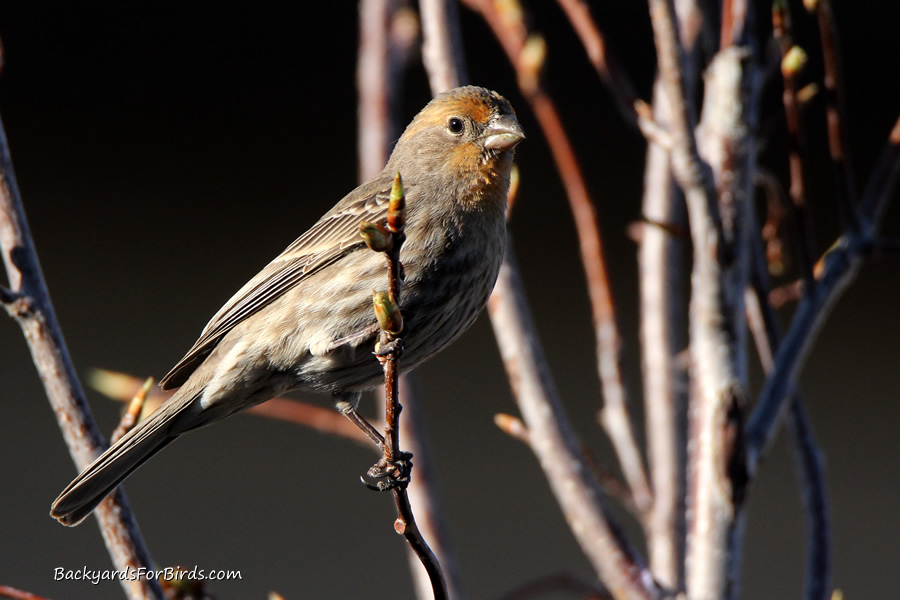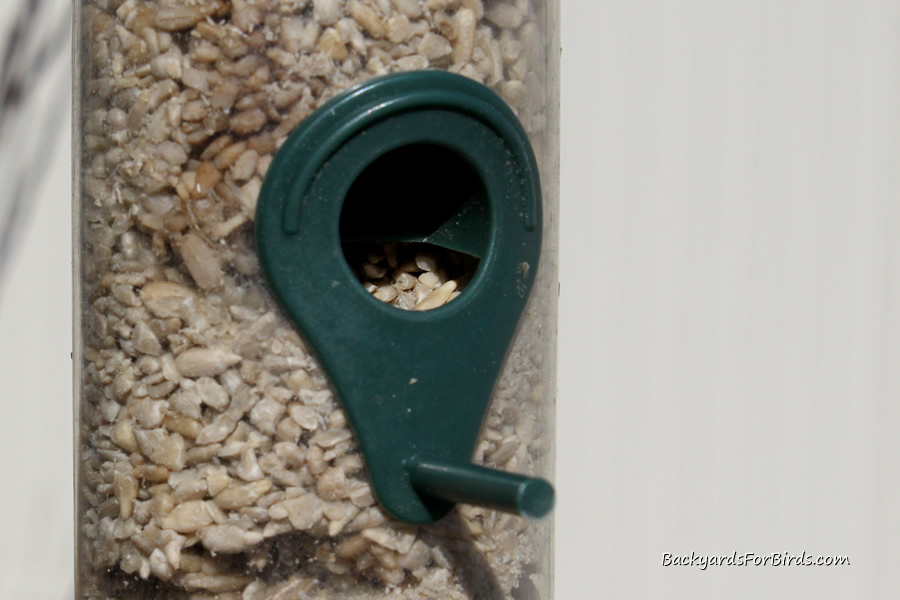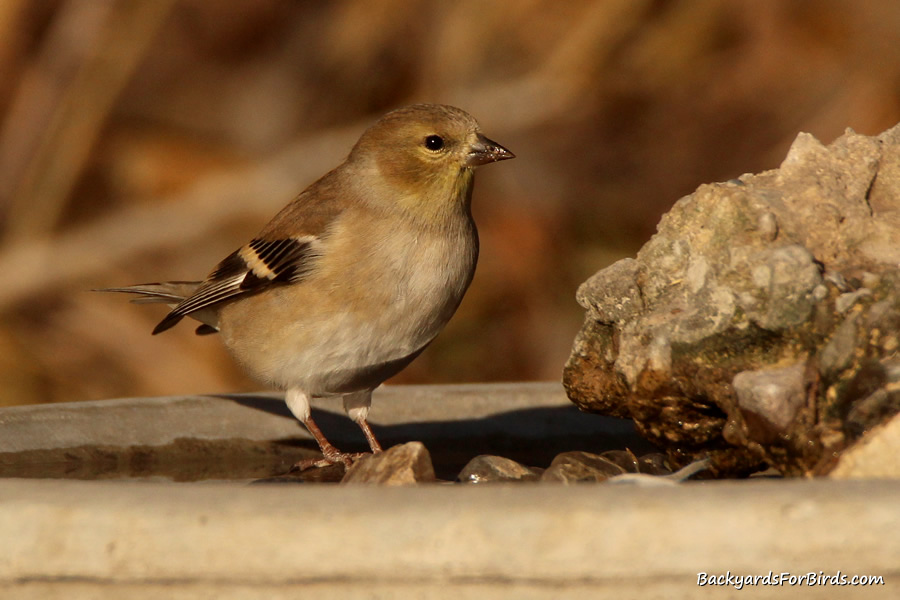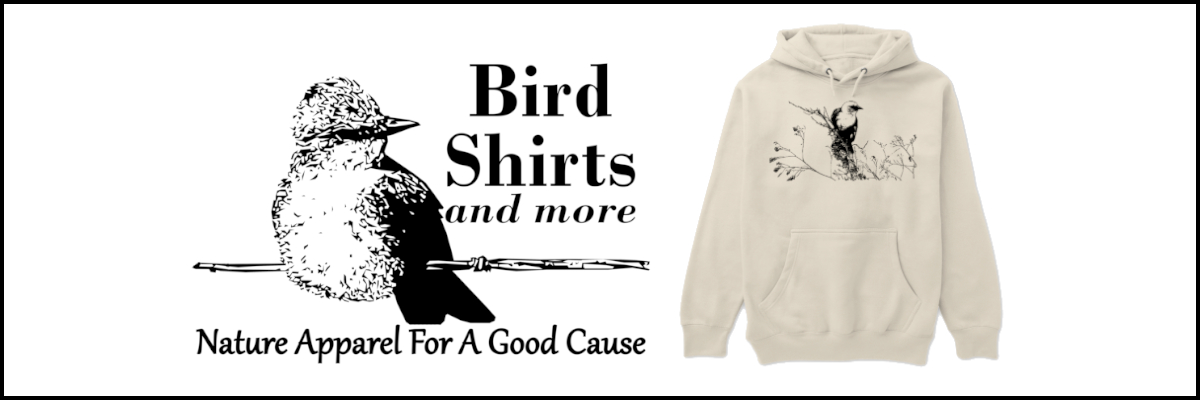The two biggest joys for me as a backyard bird watcher are seeing new species of birds in the yard and finding better ways to attract more birds to my property.
Oftentimes, those two pleasures are highly connected as finding better ways to attract more birds will, in time, bring in new varieties of birds that frequent one’s region.
We have seen this for the past several years as my brother and I continue to try new things, including different bird feeders, different types of wild bird seeds, and increasing beneficial plantings in our yards to attract more and new species of birds.
One recent change to both the style of feeder and the type of seed made at my brothers’ house has literally exploded the house finch and goldfinch populations coming to the yard in the past couple of months.

Suffice it to say, my brother has fed a great variety of seeds in a large variety of feeders over the past couple of years, and from such efforts, we have learned from trial and error what consistently brings in both the house finches and the goldfinches in our area.
We live in a region where house finches and both lesser and American goldfinches are very common but sometimes tricky to attract to the yard on a consistent basis.
There are several types of wild bird seed that attract both the house finch and goldfinch, including millet and nyjer seed, but from what we have seen in his yard the past few months, shelled sunflower seeds by far attract the most finches and goldfinches, even when sitting side-by-side to these other types of popular birdseed out in the yard.
We always offer a few different feeders with a few different types of feed to help bring in a variety of birds, but without any question, the shelled sunflowers are no doubt the most highly favored wild bird seed for both finches and goldfinches.
Shelled sunflowers
Shelled sunflower seeds are the best type of food for attracting both the house finch and the goldfinch to the backyard. It is also a great universal seed that will attract the most variety of birds to the feeder as well.
Over the past 2 years, we have tried black oil sunflowers, millet, nyjer seed, bargain mixes, premium mixes, and almost all other types and combinations of seeds to consistently attract finches and goldfinches to his backyard.

Some of these bird seeds worked well in attracting finches and goldfinches, like the millet, nyjer seed, and black oil sunflowers.
Other birdseed offerings, including the different types of mixed seeds we tried, were more wasteful than helpful as these types of birds seemed to eat one particular type of seed from each mix we offered and tossed the rest to the ground.
That is why when trying to attract one specific species of bird, it is best to use one particular type of seed than a seed mixture.
Wild bird seed mixes are designed for a variety of birds, which is great if that is your intended result, but oftentimes unwanted birds such as cowbirds, starlings, and house sparrows will be attracted to those variety mixes as well, oftentimes pushing out the more intended species of birds.
We have found this to be very true, especially with both house sparrows and cowbirds crowding the feeders.
In the past, we fed a variety of mixes, both premium and economy varieties, resulting in hundreds of house sparrows in the yard year-round and countless cowbirds during the summer, which, incidentally, pushed out most of the finches and goldfinches until some changes were made to both the feed and some of the habitat in the yard (more about the habitat changes in a future blog post).

House finches can and do shell and eat black oiled sunflower seeds, and it is no doubt a good long-standing seed that attracts finches.
But from what we have seen in our yard, finches prefer the shelled variety of sunflower seeds over the black oil sunflower seeds, which is currently providing us with more birds and less seed waste that was previously being occurred with feeding straight black oil sunflowers.
Many of the black oil sunflower seeds would be flipped to the ground as the birds casually picked through the seeds, with many of them eventually germinating and growing in the yard during last summer.

Goldfinches can also eat the black oil sunflowers but they have a much harder time shelling the seeds. As a result, goldfinches also prefer the shelled sunflower seeds over the black oil sunflower variety.
In fact, the shelled sunflowers are so highly sought after, we saw a large and almost immediate reduction in the amount of nyjer seed being used by the goldfinches in the yard when they discovered the shelled sunflower seeds.
Prior to this change, the goldfinches were almost exclusively feeding at the nyjer feeders as opposed to any other feeders in my brothers’ yard.
Nowadays, we try to offer a mixture of shelled sunflower seeds and at least one feeder filled with either nyjer or millet somewhere nearby, but a little bit more about this technique down below.
Types Of Feeders For Shelled Sunflowers
Shelled sunflower seeds can be used in a variety of different types of bird feeders, including the tube feeder, hopper feeder, and platform feeder. The best overall type of feeder to use with shelled sunflowers is the platform style of bird feeder.
From what we have observed, time and time again, is that the finches and goldfinches prefer the platform feeder the most, quite possibly because of a much lower level of competition when high numbers of birds are coming to the yard.

The tube feeders with large openings do work well, however, and we have a couple of those up in the yard. But tube feeders are limited by having only a certain number of perches, and when a dozen or more goldfinches come in at the same time, which they quite often do, the birds spend more time fighting for a perch than they do actually feeding.
This is the main reason why we like the platform feeder the best, especially when it is large enough so the birds don’t have to be so crowded and their time can be spent feeding and not squabbling over a spot at the feeder.
The only downside to the platform feeder is, however, a greater amount of seed can be spilled to the ground, but if you are like us and have ground-feeding birds such as towhees, juncos, doves, and white-crowned sparrows, the spillage is usually not wasted but used by these ground-feeding species of birds.
Time Of Day
Wild bird feeding is almost always best in the morning. Birds come to the feeders in the morning to feed and by such, the morning is the best time to observe birds at the bird feeders, as well.
Without question, birds are the most active at the feeders in the morning as they come to feed after a long night. Birds don’t come to the feeders at night so they need to feed first thing in the morning, especially during the winter when temperatures are below freezing.
Birds need to feed every day and since they don’t feed at night, the longest period of not feeding is the night so having the feeders full during the morning will result in more birds coming to the yard each day.
The Downside To Shelled Sunflower Seeds
As far as we can see, the only drawback to shelled sunflowers is the cost. They are one of the more expensive wild bird seeds on the market, but they do, in fact, bring in a lot of birds. If you can afford to feed straight shelled sunflower seeds it would be a great option to utilize in a specific feeder in your backyard.
Lately, we have been trying a different approach to help reduce the cost of feeding shelled sunflowers but still enjoy lots of finches and goldfinches in the yard, and so far it seems to be working.
Each day we put out a modest offering of shelled sunflowers on a platform feeder but have either a nyjer or millet feeder hanging nearby on a shepherd’s pole.
The birds are attracted to and come for the shelled sunflowers. But most of the time, however, more birds come than can even fit on the platform, so they end up going to and feeding on the nyjer and millet feeders nearby.
So far this method seems to be working as my brothers’ yard is constantly flooded with both house finches and lesser and American goldfinches all day long. He has taken down the variety seed mixture offerings and now just feeds shelled sunflowers, millet, and nyjer seed.

The number of house sparrows has dramatically decreased and the number of finches and goldfinches has increased more than we have ever imagined. Part of the house sparrows decreasing was, however, due to a shift in how the yard was set up and we will tackle that in a later post.
But for now, even the rich offering of shelled sunflower seeds has not brought back the hundreds of daily house sparrows we were seeing before a few simple changes were made a couple of months ago.
The numbers of house finches and goldfinches seem to be steadily increasing each week and almost no house sparrows are coming in. So far, we call that a win-win.
Water
As always, I encourage backyard birders to put out an offering of fresh water year-round in the yard.
Water is needed by all birds on an almost daily basis, and water just by itself can bring in birds to your yard. Placing a shallow birdbath near some food or a small tree or bush will attract birds all year long.

Keep the birdbath full and clean (and thawed out during winter) and it will be a nice compliment to feeding whatever type of food you offer your backyard birds.
Conclusion
All in all, attracting birds to your backyard can be done with just about any type of feed, but some feeds encourage nuisance birds, such as house sparrows, and thus encourage wasteful feeding.
We have found from our own efforts of feeding birds in the backyard, the three best types of food for finches and goldfinches are shelled sunflower seeds, nyjer seed, and millet seed. These are the mainstay wild bird seeds of our own bird feeding efforts and each and every day our feeders are hopping with these lovely birds.
Out of those three preferred seeds, we have experienced the most action with the shelled sunflower seeds, and it is now the center of how we attract house finches and goldfinches to your yards.
In addition to any wild bird seed offering, put out water nearby to help encourage birds to come to your yard, It’s a low-cost but effective way to increase bird watching opportunities in your backyard with very little effort or cost.
Subscribe
Don’t forget to subscribe to our blog for notifications for future blog posts about birds, butterflies, and all the other fascinating creatures we can attract to our very own yards. Nature is fascinating and even more so when we can observe, learn, and enjoy it anytime we want in our own backyards.

